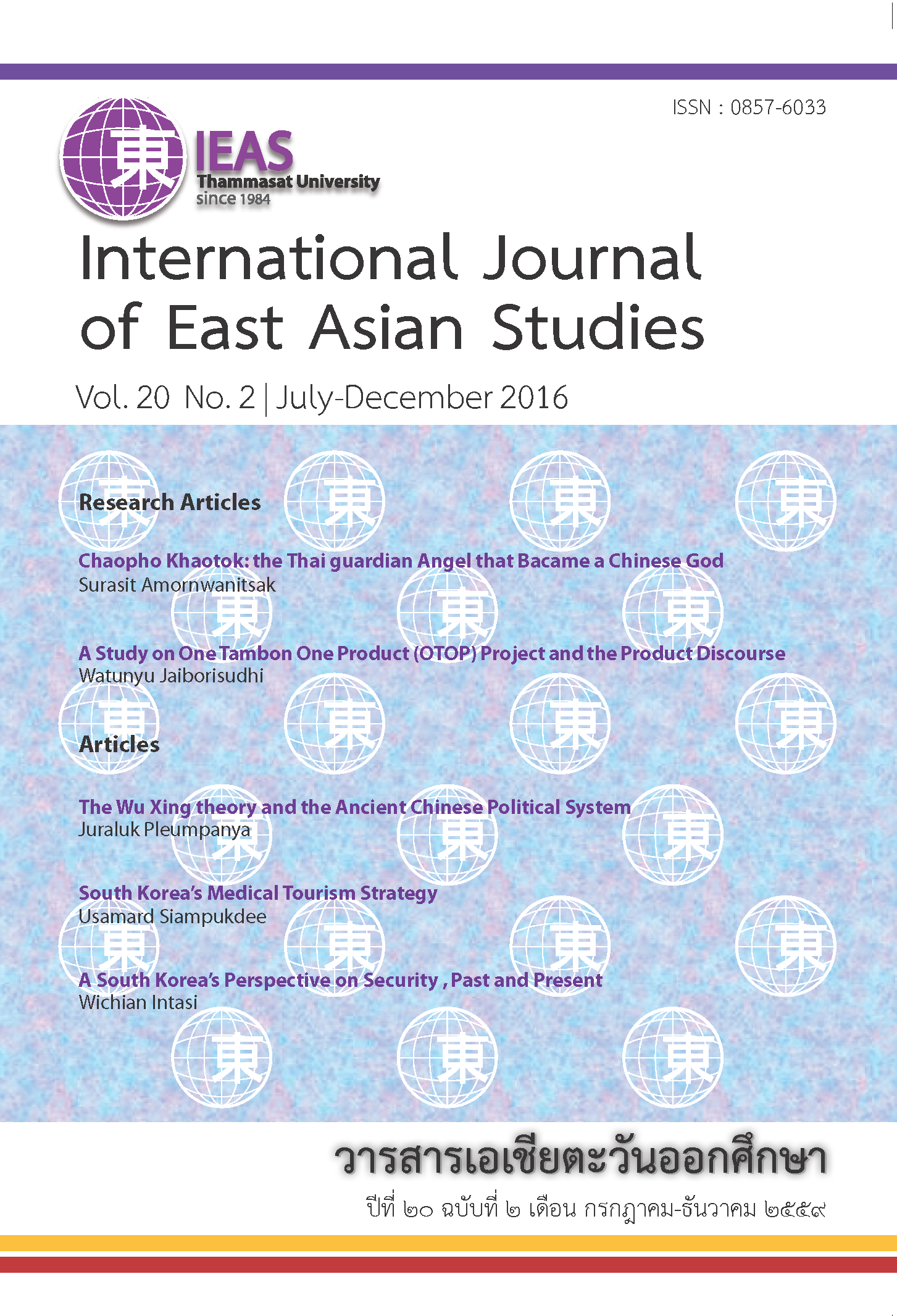การศึกษาโครงการหนึ่งตำบลหนึ่งผลิตภัณฑ์ (OTOP) ภายใต้วาทกรรมความเป็นสินค้า
Abstract
Abstract
The researcher chose the methodology of Mix Method for this research by using both quantitative and qualitative approach. With regard to quantitative research, the population was people over 12 years old who perceive the information on OTOP project. The sample group was people (in general), local community leaders, executives, professors, general staff, and student of Bachelor level in universities in Bangkok and in provinces, up to 400 samples. The sampling was taken by Simple Random Sampling method with 351 questionnaires returned. The result of the quantitative study suggested that:
Majority of the people perceive that the OTOP was goods or product produced within the community to the many to the most extent, which accounted of 87.8% (many: 53.3%, most: 34.5%). Regarding the perception of development and human development promotion, the result found that the people perceive that OTOP promoted local communities to be self-reliant to the many to the most extent, which constituted 79.2% (many: 46.4%, most: 32.8). As well as, the roles of government that support the OTOP focused more on the production of goods, than on the human development promotion constituted 79.2% (many: 40.2%, most: 39.0). It could also be described that the majority of the sample reckon the OTOP focused more on the production of goods within the community, than on the development and human development promotion.
With regard to qualitative research, the researcher used discourse analysis to analyze the process, steps, consequences in making unique identity and the definition in the form of discourse and the action of the discourse: this was to deconstruct to seek for the power and the truth behind the OTOP. The researcher found that the existing discourse of the OTOP, which derived from quantitative study, was from the following factors:
The discourse of the OTOP products stemmed from the policy formulation with political power backed by political groups. The so-called power groups would take control the OTOP in their desired direction: Being OTOP products corresponded to the result of qualitative study on the perception of government’s role in promoting and developing OTOP. At the same time, the discourse of being the OTOP products also alienated human resource development, self-reliance, and community development: this prevented the community from creative thinking. Moreover, the tools for the reproduction of discourse, controlled by the government, were implemented by marketing promotion of campaigns: OTOP exhibition both in Thailand and overseas, OTOP branding, OTOP websites and advertisement in various kinds of media. The reproduction of discourse was a mechanism to continually disseminate and emphasize the discourse of the OTOP into the people’s perception that the OTOP was product.


